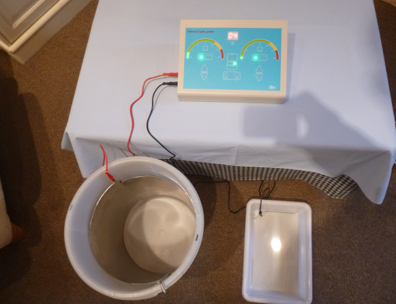Hyperhidrosis affecting the residual limb in amputees is common. The precise reason it occurs is not known but it is possibly a combination of the sweat glands in the area compensating for the ones that have been lost and the lack of evaporation of the sweat beneath the prosthesis. This localised area of excessive sweating is thought to contribute to many of the other problems amputees experience such as recurring infections, dermatitis and blisters.
Unlike many other parts of the body, there is no agreed treatment strategy of hyperhidrosis for amputees but based upon feedback from patients, doctors and the scientific literature the treatments to try are largely similar to how other skin sites are managed:
 Strong antiperspirants are the first-line treatment for all patients with hyperhidrosis. The skin at the amputation site can be sensitive and some antiperspirants can irritate the skin badly. We have heard from a patient who found the sensitive formulation of a strong antiperspirant was ideal to prevent their prosthesis liner becoming soaked with sweat.
Strong antiperspirants are the first-line treatment for all patients with hyperhidrosis. The skin at the amputation site can be sensitive and some antiperspirants can irritate the skin badly. We have heard from a patient who found the sensitive formulation of a strong antiperspirant was ideal to prevent their prosthesis liner becoming soaked with sweat.- Iontophoresis is possible using specially designed electrodes/baths that the residual limb can be placed into. There are ready made devices available from some companies and we have had electrodes made for the purpose as illustrated in the pictures below. A thin cotton stocking must be placed over the skin that is immersed in the water to prevent inadvertent contact of the skin with the metal electrode. If you are interested in this and would like further information please contact us.
- Botulinum toxin (Botox) can be used and targeted at the area(s) of skin worst affected. However, the injections can be very painful for some which is made worse when the anatomy is distorted especially after traumatic loss of the limb. As with use in other body areas the effects are relatively short-lasting and require repeat injections after three to six months.
- Other treatments can and have been used including medications and local surgery but these do require the specialist care of a dermatologist or other healthcare professional trained and experienced in treating amputees and prescribing such therapies.


A customised electrode for iontophoresis for an amputee
A custom-made electrode and bath for iontophoresis